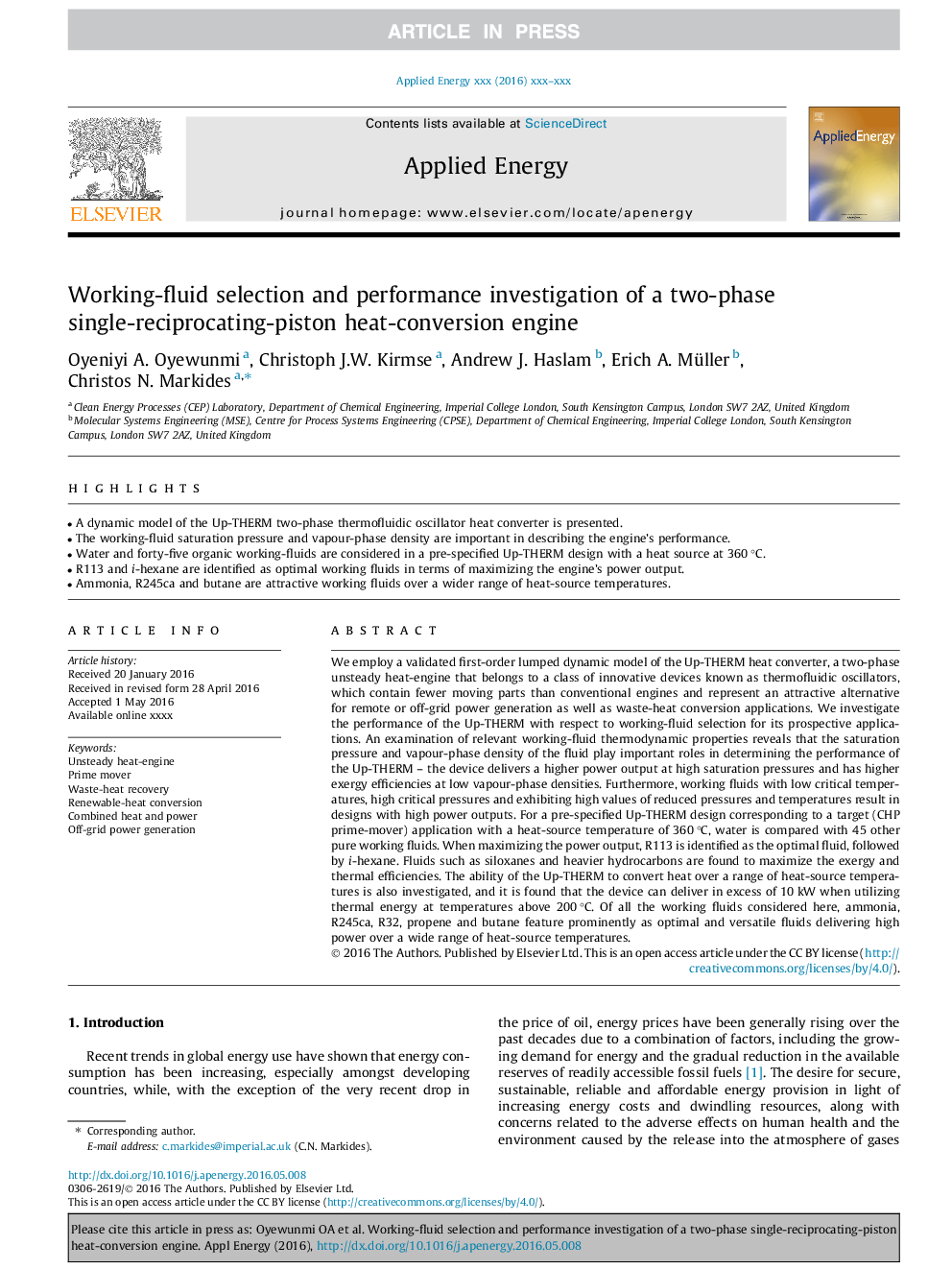| کد مقاله | کد نشریه | سال انتشار | مقاله انگلیسی | نسخه تمام متن |
|---|---|---|---|---|
| 4916806 | 1362735 | 2017 | 20 صفحه PDF | دانلود رایگان |
عنوان انگلیسی مقاله ISI
Working-fluid selection and performance investigation of a two-phase single-reciprocating-piston heat-conversion engine
ترجمه فارسی عنوان
انتخاب مایع کارایی و بررسی عملکرد یک موتور دو مرحله ای تبدیل موتور حرارتی تک سوار حرارتی پیستون
دانلود مقاله + سفارش ترجمه
دانلود مقاله ISI انگلیسی
رایگان برای ایرانیان
کلمات کلیدی
موتور حرارتی نامنظم، محرک نخست، بازیابی ضایعات-حرارت، تبدیل حرارت قابل تجدید، ترکیب گرما و قدرت، تولید انرژی بیرونی،
موضوعات مرتبط
مهندسی و علوم پایه
مهندسی انرژی
مهندسی انرژی و فناوری های برق
چکیده انگلیسی
We employ a validated first-order lumped dynamic model of the Up-THERM heat converter, a two-phase unsteady heat-engine that belongs to a class of innovative devices known as thermofluidic oscillators, which contain fewer moving parts than conventional engines and represent an attractive alternative for remote or off-grid power generation as well as waste-heat conversion applications. We investigate the performance of the Up-THERM with respect to working-fluid selection for its prospective applications. An examination of relevant working-fluid thermodynamic properties reveals that the saturation pressure and vapour-phase density of the fluid play important roles in determining the performance of the Up-THERM - the device delivers a higher power output at high saturation pressures and has higher exergy efficiencies at low vapour-phase densities. Furthermore, working fluids with low critical temperatures, high critical pressures and exhibiting high values of reduced pressures and temperatures result in designs with high power outputs. For a pre-specified Up-THERM design corresponding to a target (CHP prime-mover) application with a heat-source temperature of 360 °C, water is compared with 45 other pure working fluids. When maximizing the power output, R113 is identified as the optimal fluid, followed by i-hexane. Fluids such as siloxanes and heavier hydrocarbons are found to maximize the exergy and thermal efficiencies. The ability of the Up-THERM to convert heat over a range of heat-source temperatures is also investigated, and it is found that the device can deliver in excess of 10 kW when utilizing thermal energy at temperatures above 200 °C. Of all the working fluids considered here, ammonia, R245ca, R32, propene and butane feature prominently as optimal and versatile fluids delivering high power over a wide range of heat-source temperatures.
ناشر
Database: Elsevier - ScienceDirect (ساینس دایرکت)
Journal: Applied Energy - Volume 186, Part 3, 15 January 2017, Pages 376-395
Journal: Applied Energy - Volume 186, Part 3, 15 January 2017, Pages 376-395
نویسندگان
Oyeniyi A. Oyewunmi, Christoph J.W. Kirmse, Andrew J. Haslam, Erich A. Müller, Christos N. Markides,
